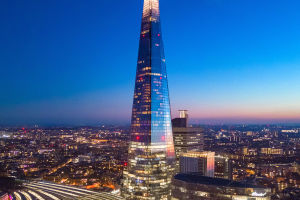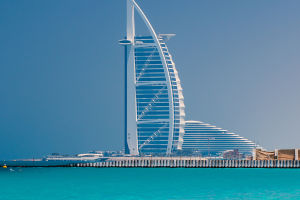The Lions Gate Bridge, an iconic suspension bridge in Vancouver, British Columbia, stands as a testament to engineering marvel and urban beauty.
Spanning Burrard Inlet, the bridge connects the city of Vancouver to the North Shore municipalities of West Vancouver and North Vancouver, serving as a vital transportation link and a symbol of the region’s natural and architectural grandeur.
Historical Significance
The story of the Lions Gate Bridge begins in the early 20th century, during a time of burgeoning development and expansion in Vancouver. The idea for a bridge was first proposed in the 1890s, but it wasn’t until the 1930s that serious plans were put into motion. The Guinness family, renowned for their brewing empire, saw potential in the undeveloped lands of West Vancouver. They proposed the construction of the bridge to facilitate access to these lands, spurring economic growth and development.
Construction began in March 1937, during the Great Depression, providing much-needed jobs and economic stimulus. The bridge was designed by the Montreal firm Monsarrat and Pratley, with structural engineering by Swan Wooster Engineering. Remarkably, it was completed in just 17 months, officially opening to traffic on November 14, 1938. The inauguration was celebrated with much fanfare, marking a new era of connectivity and progress for the region.
Engineering and Design
The Lions Gate Bridge is a suspension bridge, characterized by its two towering steel pylons and suspended road deck. The total length of the bridge is 1,823 meters (5,980 feet), with the main span measuring 473 meters (1,550 feet). The deck hangs from steel cables, which are anchored securely on either side of the inlet. The bridge’s name is derived from The Lions, a pair of prominent mountain peaks visible to the north, symbolizing strength and majesty.
The design of the bridge is both functional and aesthetically pleasing. Its Art Deco style, common in the era of its construction, is evident in the detailing of the pylons and the overall sleek lines of the structure. The green color of the bridge, chosen to blend with the surrounding natural landscape, has become an enduring feature, adding to its visual harmony with the environment.
Cultural and Economic Impact
Since its opening, the Lions Gate Bridge has been more than just a transportation link; it has become an integral part of Vancouver’s cultural identity. The bridge is featured in countless photographs, films, and artworks, symbolizing the city’s connection to nature and its forward-looking spirit. It offers breathtaking views of the city skyline, the harbor, and the surrounding mountains, making it a favorite spot for locals and tourists alike.
Economically, the bridge has been pivotal in the development of the North Shore, transforming it from a series of small communities into a thriving suburban area. It facilitated the movement of people and goods, contributing to the growth of businesses and residential developments. The bridge also supports significant commuter traffic, with tens of thousands of vehicles crossing it daily.
Maintenance and Upgrades
Over the decades, the Lions Gate Bridge has undergone several upgrades and maintenance efforts to ensure its safety and functionality. One of the most significant upgrades occurred between 2000 and 2001, when the entire deck was replaced while maintaining the bridge’s iconic appearance. This project involved innovative engineering techniques, allowing the bridge to remain open to traffic throughout the construction period, minimizing disruption to the daily commute.
The bridge’s maintenance is an ongoing effort, with regular inspections and structural assessments to address wear and tear. These efforts ensure that the Lions Gate Bridge remains a reliable and safe crossing for generations to come.
A Symbol of Vancouver
The Lions Gate Bridge stands as a symbol of Vancouver’s blend of natural beauty and urban sophistication. It is a reminder of the city’s history, a marvel of engineering, and a cultural landmark. As one drives across the bridge, the stunning vistas of the Pacific Ocean, the bustling harbor, and the majestic mountains encapsulate the essence of Vancouver. The Lions Gate Bridge is not just a means of transportation; it is a journey through the heart of one of Canada’s most picturesque and dynamic cities.
The Lions Gate Bridge is more than just steel and concrete; it is a bridge to the past, present, and future of Vancouver. Its historical significance, engineering brilliance, and cultural impact make it an enduring icon of the city’s landscape. Whether you are a commuter, a tourist, or a local, crossing the Lions Gate Bridge is an experience that connects you to the spirit of Vancouver, a city where nature and urban life coexist in perfect harmony.


